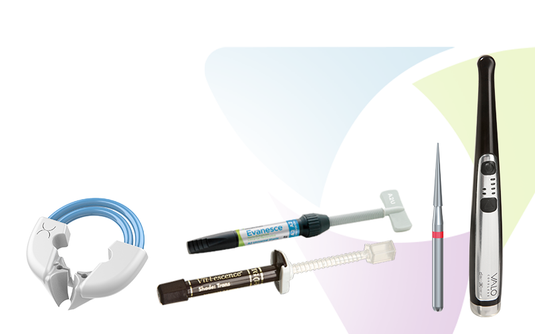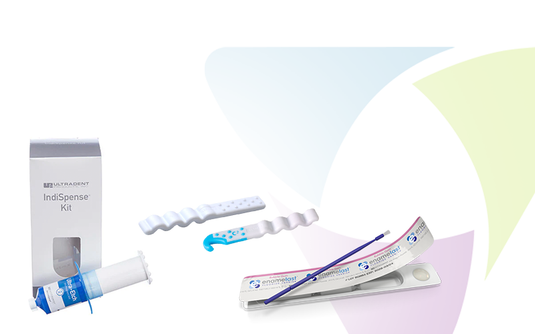
Ask the Expert: An Interview with Nate Lawson, DMD, MA, PhD on the Fabrication of Temporary Restorations
Q: How do you fabricate temporaries for fixed restorations?
There are several methods used to fabricate temporary restorations. They range in complexity from “block” temporaries, formed from the free-hand carving of set temporary material placed over the prepared tooth, to pre-fabricated stainless steel or acrylic temporary crowns to 3D printed or milled temporaries. Perhaps the most common method to fabricate temporary crowns, however, is to create a matrix of the ideal shape of the tooth and insert a bisacryl or acrylic temporary material between the matrix and the prepared tooth. This is my preferred technique in my day-to-day crown and bridge procedures.
Q: What materials can you use to fabricate a matrix for a temporary restoration?
Matrices for temporary restorations may be fabricated out of clear thermoform sheets or impression materials. Thermoform sheets allow the clinician to see the adaptation of the temporary material around the tooth preparation when seating the matrix which may help to prevent bubbles or voids in the temporary restoration. The disadvantage of a thermoform matrix; however, is that the clinician must possess a hard model of the ideal shape of the tooth. Therefore, impression materials are commonly used as matrices for temporaries. Alginate impressions are sometimes used as a matrix for temporary restorations due to their fast setting time and low cost. Alginates have poor detail reproduction which will affect their ability to reproduce a temporary with good marginal adaption and occlusal fit. Alginates also dry out quickly and have low tear strength which means that they cannot be re-used in the case that the patient needs to have a temporary re-made. Silicone-based impression materials, therefore, are a favorite material for temporary matrix materials.
Q: What are desirable properties of a temporary matrix material?
An ideal temporary matrix material will have good detail reproduction so that temporary material will closely adapt to the tooth preparation as well as accurately replicate the contours and occlusal anatomy of the ideal temporary. This reduces the amount of time needed to ensure a proper fit and finishing of the temporary. The contours of the temporary ensure good tissue health and occlusal comfort and stability over the temporization period. A matrix material should also set quickly as very little working time is needed for this application. Finally, a matrix material should be dimensionally stable and have good tear strength so that it can be re-used if
necessary. Bite registration materials are frequently used to achieve these properties.
Q: Why do you like to use Template as temporary matrix material?
Template is a silicone-based matrix material with a high detail accuracy and a 30-second setting time. This material has a faster setting time than most bite registration materials and better detail reproduction than bite registration materials. Because it is silicone-based, it has high tear strength and it is dimensionally stable.
Q: What are the other applications for Template?
Template is also useful with direct restorations. It can be used to form a lingual matrix for anterior composite restorations. For this method, a mock-up of the ideal lingual contours of the anterior tooth are built with old composite in the mouth. Only the lingual contours, incisal edge position and approximate occlusion need to be considered for this buildup. The lingual surface, including the facio-incisal line angle, is then impressed with Template. This lingual matrix is then used to build up layers of composite for the final restoration. Additionally, a buccal matrix using Template fabricated from a hard model of a diagnostic wax-up can be used as a facial reduction guide when preparing for direct or indirect veneers.
Q: How would you create a temporary for a tooth that does not begin as an intact tooth?
This scenario can create a time-management headache in a busy clinical setting. In this case of a fractured crown (FIG. 1) where a portion of the crown remains cemented on a vital tooth, the patient was experiencing sensitivity due to exposed dentin and required immediate temporary coverage. In any clinical setting, available chair time may be limited and may not allow for obtaining an impression of the fractured tooth along with the opposing dentition and fabricating a temporary matrix from an ideal wax-up. Therefore, the clinician may build up the tooth with old or expired composite or wax and then take an impression of the tooth. One challenge with this method, however, is that the composite or wax buildup may dislodge from the tooth in the process of taking the impression of the tooth. In order to avoid this another technique was utilized. An impression of the non-intact tooth was taken using Template Ultra Quick Matrix Material (Clinician's Choice)
in a Quad-Tray Xtreme (Clinician's Choice) dual-arch impression tray. (FIG 2) The remaining restoration was then removed from the impression using a bur in order to provide room for a full thickness temporary. It was necessary to perforate the temporary impression in order to gain sufficient space. (FIG. 3) At this point, the temporary impression was set aside until the tooth was re-prepared for the new restoration. Once the temporary crown was fabricated using Inspire Esthetic Provisional Composite (Clinician's Choice), it was necessary to quickly recontour and establish proper occlusion as well as remove some flash that resulted from the perforated impression. This was easily accomplished with finishing burs prior to cementation. (FIG. 4) Cling2 Resin Optimized Temporary Cement (Clinician's
Choice) is ideal for providing a stable, healthy and sensitivity-free temporization stage. (FIG. 5)
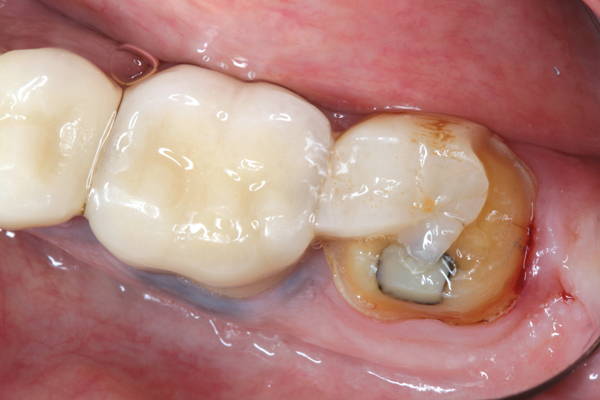
FIG. 1
Patient presented as an emergency patient with a fractured
ceramic crown. The tooth was vital and the patient was
experiencing sensitivity due to exposed dentin.
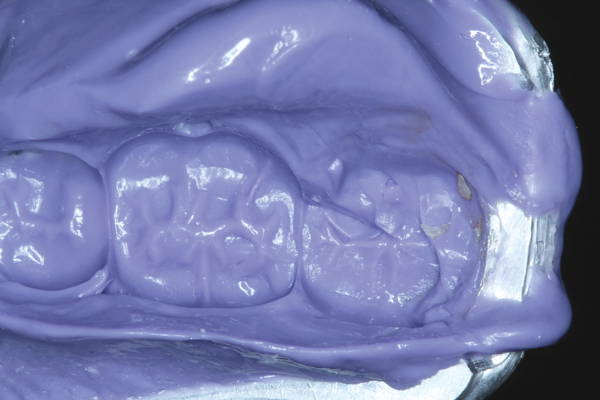
FIG. 2
An impression of the fractured crown was taken quickly
with Template in a Quad-Tray Xtreme.
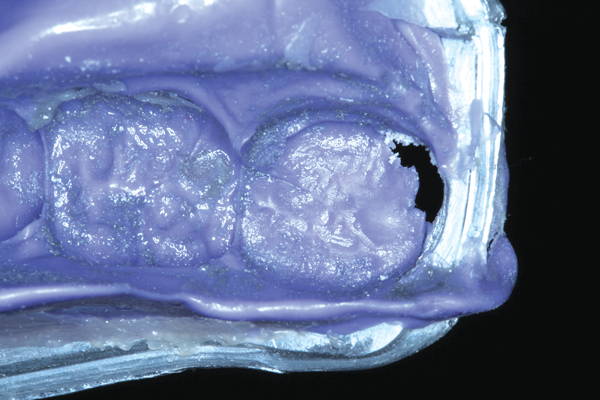
FIG. 3
The areas of the missing crown structure were removed
with a rotary instrument. It is important that sufficient
material is removed to allow for adequate thickness of
temporary material.
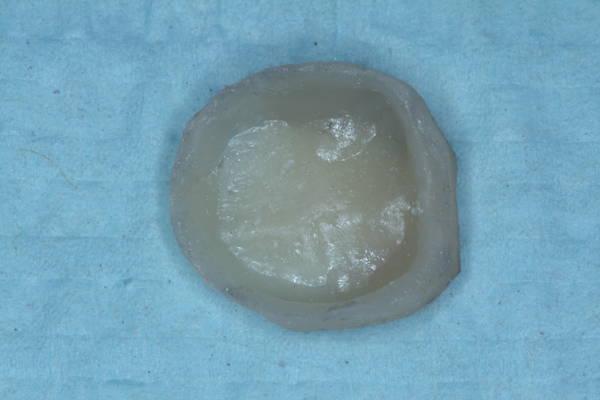
FIG. 4
The temporary crown was removed from matrix and quickly recontoured to remove bulk and flash and then polished.
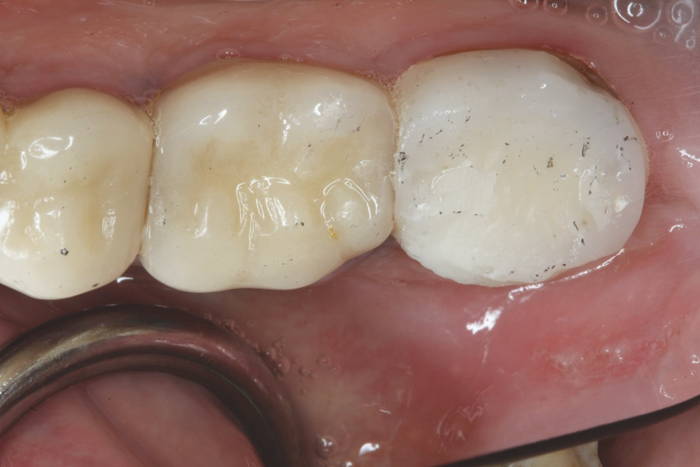
FIG. 5
The temporary crown was cemented with temporary cement. Occlusion was adjusted. Note that this method may not create anatomic occlusal contours unless clinician creates them with finishing burs.
About the Author

Nate Lawson, DMD, MA, PhD
Nate Lawson DMD, MA, PhD is the Director of the Division of Biomaterials at the University of Alabama at Birmingham School of Dentistry and the program director of the Biomaterials residency program. He graduated from UAB School of Dentistry in 2011 and obtained his PhD in Biomedical Engineering in 2012. His research interests are the mechanical, optical, and biologic properties of dental materials and clinical evaluation of new dental materials. He was the 2016 recipient of the Stanford New Investigator Award and the 2017 3M Innovative Research Fellowship both from the American Dental Association. He served on the American Dental Association Council of Scientific Affairs and is on the editorial board of The Journal of Adhesive Dentistry and Compendium. He has lectured nationally and internationally on the subject of dental materials. He also works as a general dentist in the UAB Faculty Practice.
Discover More
This article was originally published in the Clinical Life™ magazine: Winter 2023 edition
Clinical Life™ magazine is a premier periodical publication by Clinical Research Dental Supplies & Services Inc. Discover compelling clinical cases from Canadian and US dental professionals, cutting-edge techniques, product insights, and continuing education events.

